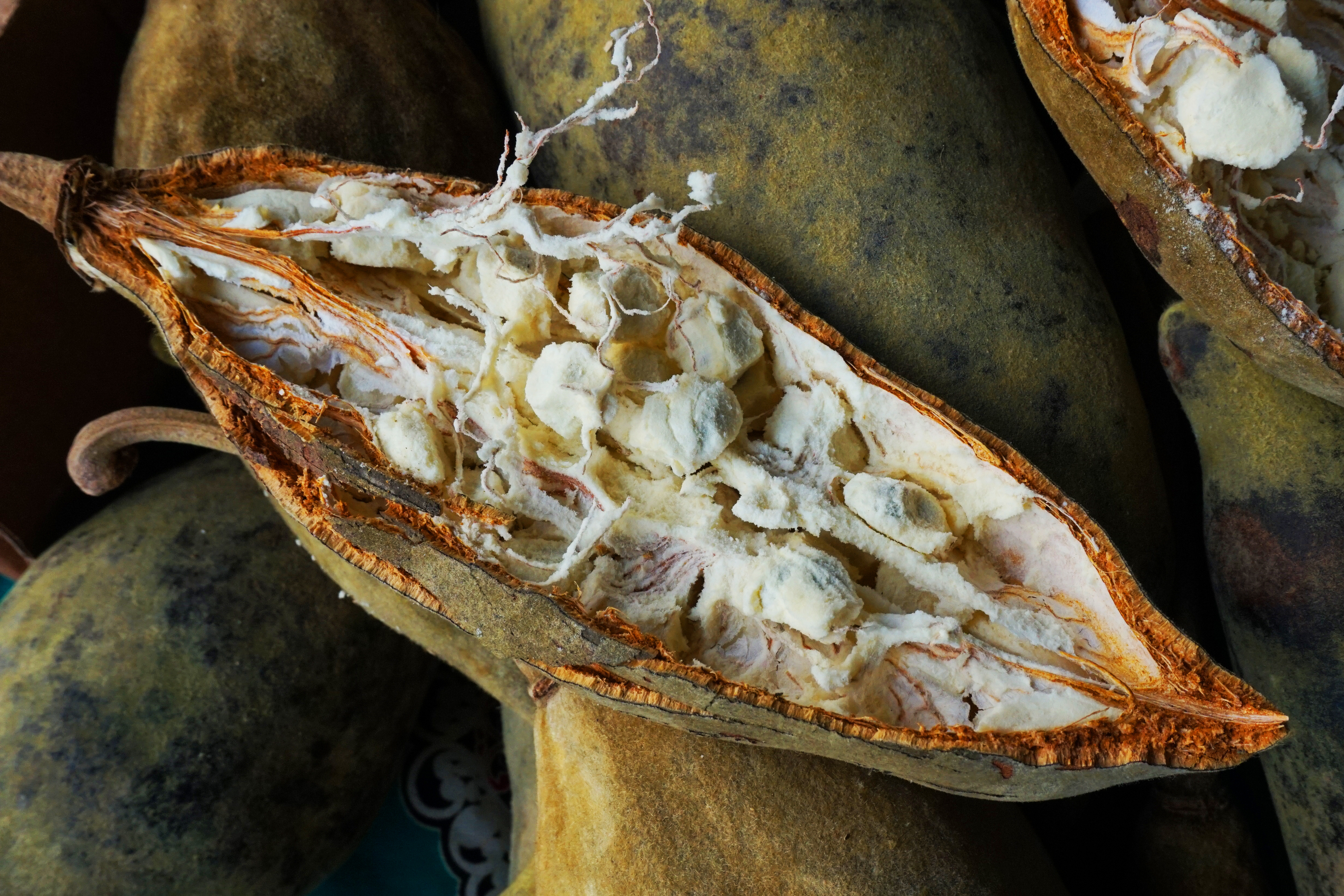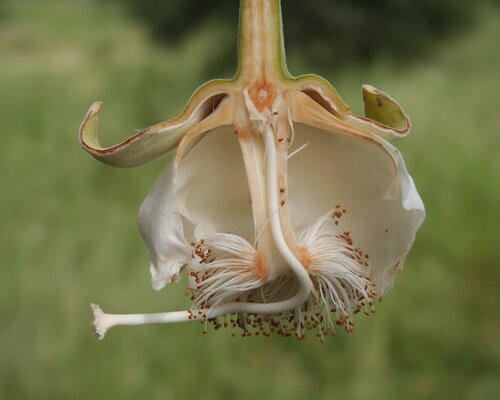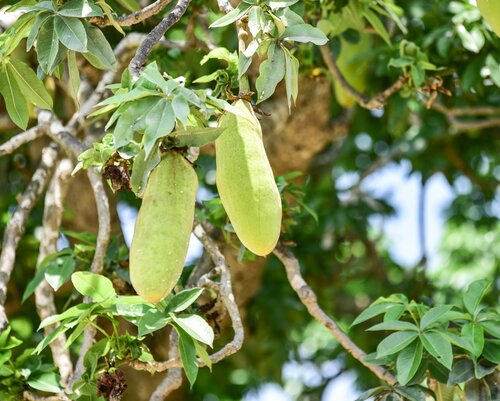Baobab
Adansonia digitata
Crop Overview
Adansonia digitata L. is the most widespread and best-known of the baobabs, a genus of trees mainly confined to Africa and Madagascar. Also known as the upside-down tree and the tree of life, it is a large, long-lived deciduous tree, growing to a height of up to 25 m. Its native range spans sub-Saharan Africa and the Arabian Peninsula and it has been introduced into India, Madagascar, Sri Lanka and Vietnam. Known for its iconic bottle-shaped trunk, the baobab thrives in dry savannahs and is revered as a symbol of resilience and sustenance in arid regions.
Characteristics, Cultivation and Agricultural Practices
Baobab trees can live for more than 2,000 years, although many large and old baobabs have died suddenly in recent years due to unknown causes. The trees are typically found in hot, dry savannahs. They require little water and thrive in well-drained sandy soils, aided by the bulbous trunk, which can store vast amounts of water. They tolerate high temperatures and prolonged droughts.
Fruits and leaves are harvested from wild trees. The trees are not cultivated, in part because of the challenge of breaking seed dormancy and the long period before the trees start to bear fruit (up to 20 years).
Nutritional, Economic and Medicinal Value
The leaves, fruits and seeds of the baobab can all be eaten, as can the tuberous taproot of seedlings and young saplings. The seeds are rich in carbohydrates, high-quality protein containing all eight essential amino acids, fat, vitamin C (up to 10 times the level in oranges), phosphorus and potassium. The pulp of the fruits also contains high levels of vitamin C, and is a good source of protein, carbohydrates, lipids, dietary fiber, calcium, phosphorus and potassium. It is, however, low in iron and manganese. The leaves are a good source of vitamins A and B, protein and a wide range of minerals, including calcium, iron, potassium, phosphorus and zinc.
The fruit is used to make fruit juice. Fruits and leaves are dried and used in a variety of dishes. Young leaves can be cooked as a leafy vegetable and used in soups. The seeds can be dried and made into flour. They can also be used to produce oil for cooking. Leaves and seed meal (after oil has been extracted) can be used as feed for livestock.
The bark of the baobab is used to make very durable ropes, mats, baskets and clothing.
Baobab oil, extracted from the seeds, is used in skincare products for its moisturizing and anti-aging properties.
Baobab seeds, bark, leaves and fruit pulp have been used in traditional medicine to treat various ailments, including malaria, diarrhea, anemia and bacterial infections.
Cultural Importance
Baobab trees hold deep cultural significance in many African communities. They are often seen as symbols of life and resilience, providing food, water and shelter in challenging environments. Baobabs feature widely in folklore, storytelling and mythology. Baobab trees commonly serve as sites for community gatherings, spiritual ceremonies and celebrations and are considered sacred in many societies. In some cultures, baobab fruit and bark are used in rituals, blessings and rites of passage, reinforcing their importance beyond its nutritional and economic value.
Gender Perspectives
Women are the main harvesters of baobab leaves and fruits and are largely responsible for processing them for food and other uses. This provides an important source of income for women. In some areas of South Africa, for example, selling baobab fruit has been reported to increase women’s cash income by 250%, allowing them to pay for education, food and healthcare for themselves and their dependents. In Ghana and Mozambique, women-led cooperatives produce baobab oil and powder for local and international markets.
Scaling up baobab production and linking women to export markets can enhance livelihoods. Initiatives like the African Baobab Alliance support women in accessing fair trade certifications and value chains.
Why is the Crop Underutilized?
Despite its nutritional and economic potential, baobab remains underutilized largely due to lack of structured markets, challenges in scaling up cultivation and the labor-intensive nature of harvesting.
Diversity Available in Genesys
As of December 2024, Genesys, the online information platform about plant genetic resources for food and agriculture conserved in genebanks worldwide, lists 405 samples of baobab. Most of these holdings are at:
- Center for International Forestry Research and World Agroforestry (CIFOR-ICRAF) in Kenya - 394 samples.
Current Breeding Efforts
No current systematic breeding efforts for baobab trees have been identified, with research ongoing.



